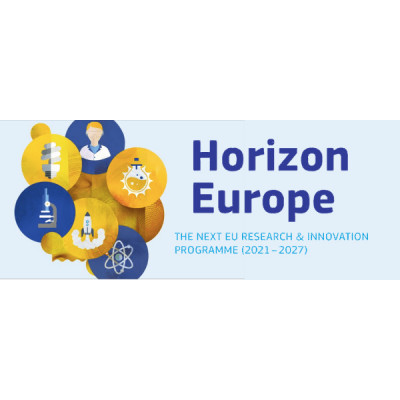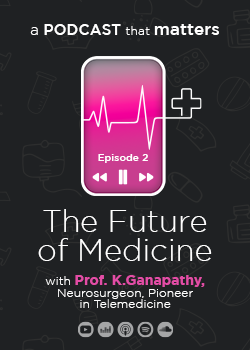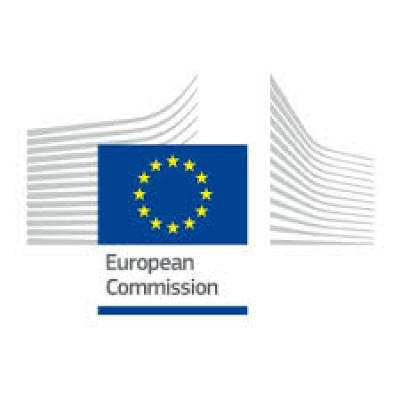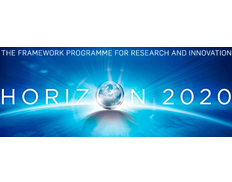
Low carbon-dioxide emission technologies for melting iron-bearing feed materials OR smart carbon usage and improved energy & resource efficiency via process integration (Clean Steel Partnership) (IA)
Details
Description
Call updates
Aug 11, 2023 11:35:53 AM
EVALUATION RESULTS
Call for proposals: HORIZON-CL4-2023-TWIN-TRANSITION-01
Deadline: 20 April 2023
Available budget: EUR 334,270,000.00
The results of the evaluation are as follows:
Number of proposals submitted (including proposals transferred from or to other calls): 210
Number of inadmissible proposals: 3
Number of ineligible proposals: 5
Number of above-threshold proposals: 155
Total budget requested for above-threshold proposals: EUR 1,123,924,110.83
We recently informed the applicants about the evaluation results for their proposals.
Please note that the number of proposals that can finally be funded will depend on the finally available budget and the formal selection by the Commission.
For questions, please contact the Research Enquiry Service.
Apr 26, 2023 5:51:19 PM
PROPOSAL NUMBERS
Call HORIZON-CL4-2023-TWIN-TRANSITION-01 has closed on the 20th April 2023.
210 proposals have been submitted.
The breakdown per topic is:
· HORIZON-CL4-2023-TWIN-TRANSITION-01-43 02: proposals
Evaluation results are expected to be communicated in July 2023
Dec 8, 2022 9:50:00 AM
The submission session is now available for: HORIZON-CL4-2023-TWIN-TRANSITION-01-43(HORIZON-IA)
Low carbon-dioxide emission technologies for melting iron-bearing feed materials OR smart carbon usage and improved energy & resource efficiency via process integration (Clean Steel Partnership) (IA)
TOPIC ID: HORIZON-CL4-2023-TWIN-TRANSITION-01-43
Programme: Horizon Europe Framework Programme (HORIZON)
Call: TWIN GREEN AND DIGITAL TRANSITION 2023 (HORIZON-CL4-2023-TWIN-TRANSITION-01)
Type of action: HORIZON-IA HORIZON Innovation Actions
Type of MGA: HORIZON Action Grant Budget-Based [HORIZON-AG]
Deadline model: single-stage
Planned opening date: 08 December 2022
Deadline date: 20 April 2023 17:00:00 Brussels time
ExpectedOutcome:
Projects outcomes will enable achieving the objectives of the Clean Steel Partnership (CSP) by contributing to one of the following two aspects:
Integrating the next-generation iron-bearing feed materials melting technologies into an existing and optimised steelwork, to further push the transformation towards a low-CO2 production site (related to the CSP Building Block (BB) 3: Melting of pre-reduced and reduced ore, scrap, and iron-rich low-value residues for clean steel production[1]);
Curtailing CO2 emissions generated by the steel industry by smart carbon usage - process integration (SCU-PI), which allows reducing fossil fuel (e.g., coal) used in blast furnace - basic oxygen furnace (BF-BOF), electric arc furnace (EAF) and direct reduction - EAF (DR-EAF); this includes, among others, the (partial) replacement of coal by e.g. biogas, or hydrogen, or the advanced management of the energy streams and process gases (e.g., off gases released from EAF / BF-BOF; relevant relations to the CSP BB 1 “Gas injection technologies for clean steel production”; BB 4 “Adjustment of today’s production to prepare for the transition towards climate neutrality”; BB 7 “Heat generation for clean steel processes”, and BB 10 “Enablers e.g., skills, digitisation, for clean steel development”).
Projects related to the above point 1 are expected to contribute to one or more of the following outcomes:
Innovative or improved melting processes for next-generation clean steel production, such as, but not limited to, charging and pre-heating technologies for iron-bearing feedstock to reduce the CO2 emission by at least 20 % compared to current state of the art;
Integration of next generation melting technologies into an existing and optimised steelwork, with the objective to enable transformation towards a low-CO2 production site. Proposed solutions should consider also the supply chain to strongly reduce the environmental footprint of the steel melting process;
Enhance the use of iron-bearing feedstock intermediate products with variable content of carbon and variable metallisation, including low-value iron-based sources. (e.g., DRI, recovered by-products) in melting processes.
OR
Projects related to the above point 2 are expected to contribute to one or more of the following outcomes:
Use advanced information and communication technology (ICT) to achieve process and energy integration and optimisation of the efficiency of steelmaking and downstream processing (heating and treatment furnaces) in steel plants;
Improve the injection of metallurgical gases, as well as hydrogen-rich gases (e.g., a mixture of hydrogen and methane) and/or hydrogen, within the steel making processes;
Adaptation of gas handling systems to new gases and their related properties;
Utilisation and recycling of gases (e.g., carbon-containing process gases, oxygen, external gases, such as but not limited to, waste gases from a neighbouring chemical plant or syngas produced from an external pyrolysis plant) in integrated plants with mixed technology routes;
Enhance production and energy management of integrated plants with mixed technology routes (e.g. blast furnace–basic oxygen furnace (BF-BOF), direct reduction-electric arc furnace (DR-EAF)), to drastically reduce the consumption of coal and the CO2 emissions.
Scope:
Proposals should aim at one of the following two aspects, corresponding respectively to the points 1) and 2) outlined under the expected outcomes section:
Proposals should address novel and adapted low-CO2 emission technologies for pre-treatment, pre-heating, and melting of iron-bearing feedstock materials with variable content of carbon and variable metallisation including, among others, low-value iron-based sources (i.e., >5% of acidic gangue), or dust and sludge from de-dusting systems. The focus is on the three technological routes of blast furnace–basic oxygen furnace (BF-BOF), electric arc furnace (EAF), and direct reduced iron / hot briquetted iron form (DRI / HBI) including the refining and casting processes.
Multidisciplinary research activities should address one or more of the following:
Adding variable percentages of steel scrap and/or a wide range of iron-bearing feed materials with variable content of carbon and variable metallisation to the melting process, including low-value iron-based sources (i.e., >5% of acidic gangue and/or residue) without prejudice to the yield of the metallic charge;
Adaptations on existing melting processes to replace the traditional use of carbon and hydrocarbons (e.g., for re-carburisation of the liquid, for promoting slag foaming or charge heating) with climate-neutral sources and/or hydrogen;
Reduction of the specific consumption of the melting step to achieve a low carbon process by optimisation of energy inputs (electrical vs. chemical) depending on the charge mix (scrap, DRI, HBI, pig iron, low-value iron-based sources) and/or by pre-heating of the iron-bearing feed materials;
Handle a variability of iron-bearing feedstock in the melting process by methods to assess the material quality within production chains, to recover metal contents from low-value iron-ore feedstock or residues by pre-reduction or reduction smelting with H2, biogas, CO2-lean electricity, and carbon-bearing residues;
Controlling of tramp elements in molten liquid obtained by low iron-bearing feedstock to ensure quality and castability of melted steel and improvement of yield and quality of process and product;
New sensors and tools for real-time management inside the melting process such as liquid metal and slag temperature and composition and/or reliable energy forecasting to optimal setup and process control.
OR
Proposals should aim at the reduction of fossil fuel and reductant used in both BF-BOF and EAF / DR-EAF steel production and, in turn, curtailing CO2 emissions, using process technologies for gas injection e.g., for BFs, DR plants, but also for EAFs. New control techniques will also have to be developed considering process needs, safety issues, and economic aspects. Gas injection options have the potential for very low CO2 emissions but need intermediate steps before being ready for full industrial deployment (e.g., injection of high percentages of hydrogen in BF and EAF). To achieve the objectives, it could be relevant to consider technology improvement along with developing appropriate business models.
Multidisciplinary research activities should address one or more of the following:
Process integration through injection of metallurgical gases or biogas or O2 and H2 (H2-rich gases or pure H2) into metallurgical reactors (e.g. BF, DR, or EAF) to minimise the need for fossil carbon, including new developments regarding the related process technology and control technology;
Utilisation and recycling of gases as substitutes in existing steel processes such as, but not limited to, coking plant, sinter plant, BF, DR, BOF, EAF;
Consider techniques and tools, which support the immediate decrease of the carbon footprint on the industrial level, with measures such as, but not limited to, involve the production cycle, the energy, and materials supplied;
Adapt gas handling and distribution to new gas properties and amounts and consider process needs, safety issues, and economic aspects;
Integrate new measuring technologies and/or digital tools for monitoring and control inside the novel architectures of ICT covering the processes considered (existing and new processes), conditions and resources; the extensive use of Industrial Internet of Things (IoT) approaches should allow the easy and fast integration of the new measurement techniques into the set of data streams to be monitored and offline / online used for process setup and control and knowledge extraction;
Provide concepts addressing the re-optimisation of the process integration in future integrated steelworks based on clean steel production technologies and considering the stepwise transition of production lines from current conventional iron and steelmaking to future low carbon technologies including relevant intermediate states with mixed production chains.
This topic implements the co-programmed European Partnership on Clean Steel.
Specific Topic Conditions:
Activities are expected to start at TRL 5 and achieve TRL 6-7 by the end of the project – see General Annex B.
[1]https://www.estep.eu/assets/CleanSteelMembersection/CSP-SRIA-Oct2021-clean.pdf




